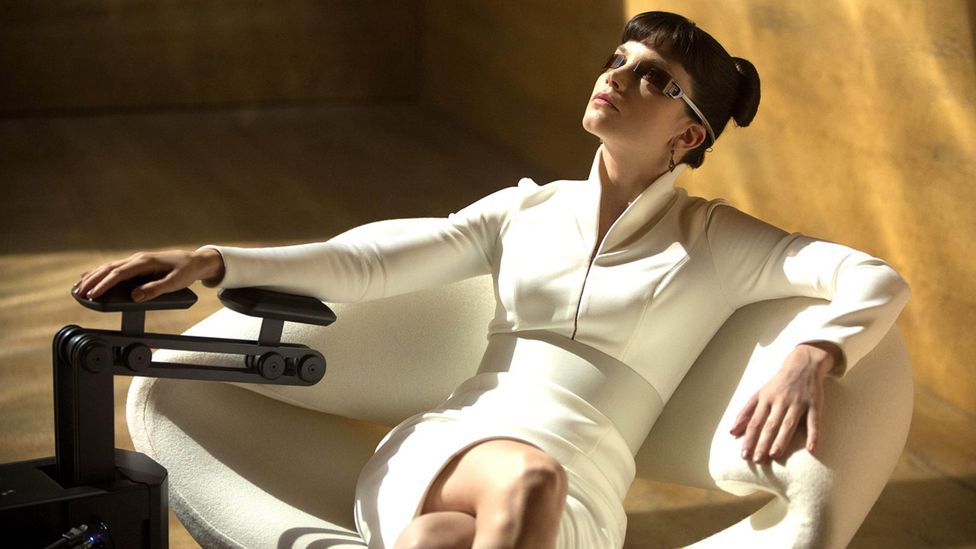
Watch any recent science-fiction movie and you’ll be struck by divergent visions of the future, as seen through the eyes of Hollywood costume departments. Follow the sartorial route of Ryan Coogler’s Black Panther, for example, and we can expect to sheath our fortunately pneumatic bodies in reinforced scuba suits. Turn instead to the post-apocalyptic worlds of Blade Runner 2049 and the TV series The Expanse, and the offer is bastardised street wear, scavenged from the wardrobes of the past.
More like this:
Anything, apparently, is better than what we have now. From questions over modern slavery to the planet-levelling effects of over-consumption, fashion is under fire – and brands are having to adapt. According to a recent report shared at the Camera Nazionale della Moda Italiana’s third international roundtable on sustainability in Milan, buyers at stores like Barneys and Saks in the US and Printemps in France expect to nearly double their total spending on sustainable products in the next five years, from 23% to 40%.
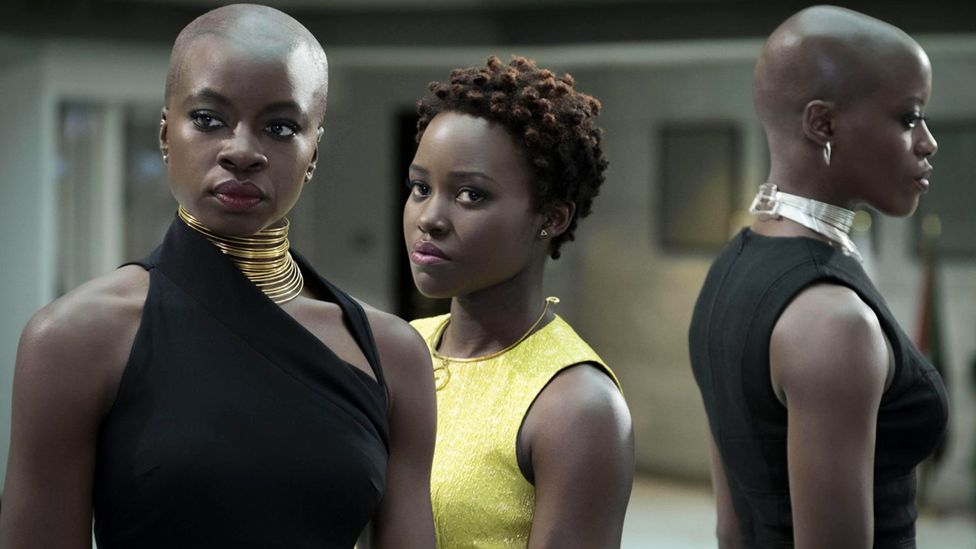
The costume design for the futuristic film Black Panther was widely acclaimed, and won the 2019 Oscar (Credit: Alamy)
What looks set to remain constant, however, is the urge to consume, hard-wired into human nature. As Dr Mark Summer from Leeds University School of Design wrote, in Fixing Fashion, this year’s report by the Environmental Audit Committee: “fashion satisfies consumers’ psychogenic needs… and any solution has to recognise – and maintain – these benefits.
Accordingly, innovators are exploring future solutions that offer all the hit of the new buy without stripping the earth – and the answers, increasingly, appear to lie in the digital world. “We’re finally seeing the digital industry revolutionise age-old practice and evolving over the next 20 years,” says Rachel Stott of The Future Laboratory. “Immaterial and digital fashion offers opportunities for brands to exert creativity, and connect with consumers through a different medium.”

In TV series The Expanse the post-apocalyptic look is scavenged street wear (Credit: Alamy)
A hairstyle made from water, a dress that alters its shape according to sound: these are all possible – Rachel Stott
And in one manifestation, the clothes won’t exist at all. When Norwegian retailer Carlings launched a digital collection last year, the fashion – futuristic streetwear, bought online and e-fitted to users’ photos – was created to counter the ‘wear once, take a selfie, chuck it away’ philosophy of today’s frantic online influencer. “We’ve opened up a world of taking chances with styling, without leaving a negative footprint on the world,” Morten Grubak of Virtue Nordic, told iD’s Jake Hall, at the time.
For the virtual generation, the digital collection is just a logical step forward. Fervent players of games like Fortnite, The Sims and Sansar already spend billions on things that aren’t actually there – including clothes. “Increasingly, we will see digital collections and garments free from physical and creative restrictions become part of the fashion landscape,” says Stott.
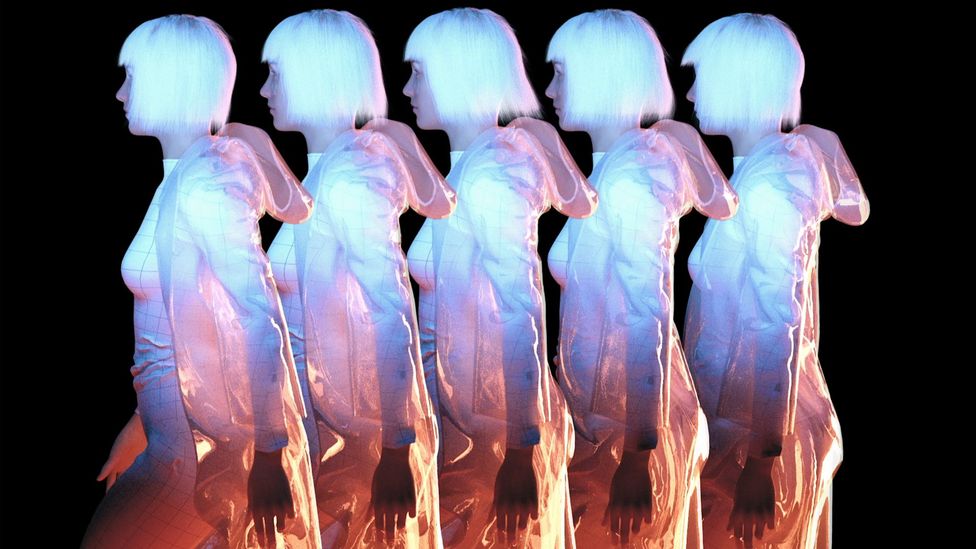
Norwegian retailer Carlings launched a digital collection in 2018, paving the way ahead (Credit: Carlings)
“There is a clear trend to blending the physical world with online content,” agrees Matthew Drinkwater, of the London College of Fashion’s Fashion Innovation Agency. His vision posits a future in which, using augmented-reality glasses that overlayg digital imagery onto the real world, we ‘share’ the clothes we want to be seen wearing into the AR glasses of others who are participating.
Pie-in-the-sky? Not quite. Working with Lucasfilm’s immersive entertainment division ILMxLAB, Drinkwater introduced the project at designer Steven Tai’s London Fashion Week 2018 presentation.
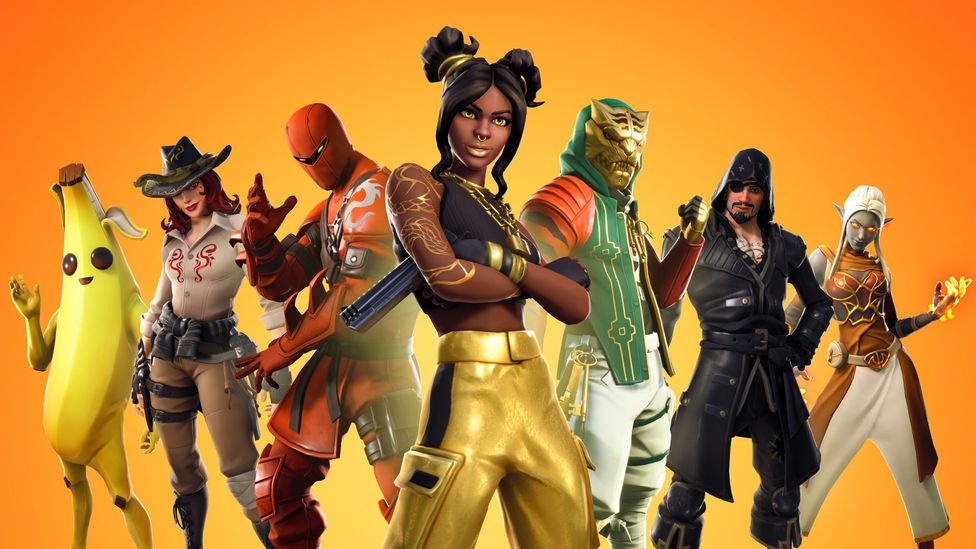
Games such as Fortnite offer players different identities for their avatars, a sign of things to come in fashion (Credit: Epic Games)
“The project hints at a future where we will be able to download content to our clothing, viewable through AR glasses, and present ourselves differently to everyone around us,” says Drinkwater. “Our identities are constantly evolving and becoming more fluid by straddling both the digital and physical realms,” adds Stott. “Digital fashion allows people to fully experiment with how they would like to be perceived – and push limitless creative boundaries. A hairstyle made from water, a dress that alters its shape according to sound: these are all possible.”
Brave new world
But, if the thought of operating so completely online makes you jumpy, there are more concrete applications for the tech. According to the Ellen MacArthur Foundation, $500 billion is lost every year in clothing under-use and waste costs; 87% of all fashion made goes to landfill. So what would happen if we only made clothes people really wanted? This is the concept behind NY-based digital agency Neuro Studio’s latest work, Solventus 2019, a collection for which human models were 3D-scanned to obtain precise measurements before the garments were designed directly onto digital avatars.
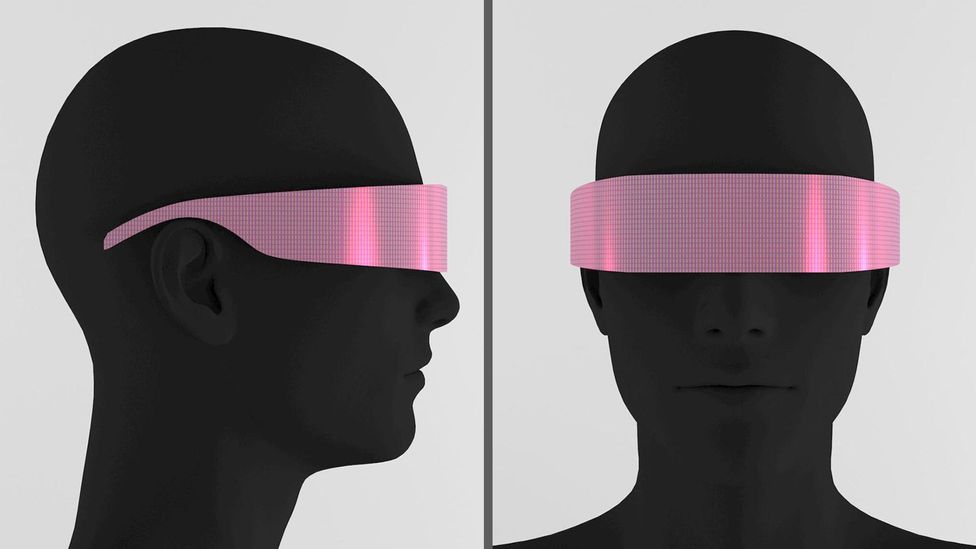
Virtual-reality technology will play a key role in future fashion (Credit: Carlings)
The intention, eventually, is to only make the clothes – capes, body harnesses and leggings built with body-supporting weaves and cold weather fabrics; very post-apocalyptic – when someone orders them.
And there is, of course, more: Neuro Studio’s collection encompasses 3D-printing, the tech that allows designers to tailor-make pieces digitally for individual customers. Sportswear companies such as Nike, which already allows shoppers to design their own trainers, posit a future where consumers will be able to 3D print their own shoes at home. Shoppers could become designers – when streetwear label Hype couldn’t decide which design to go for, they let their customers choose via an Instagram post.
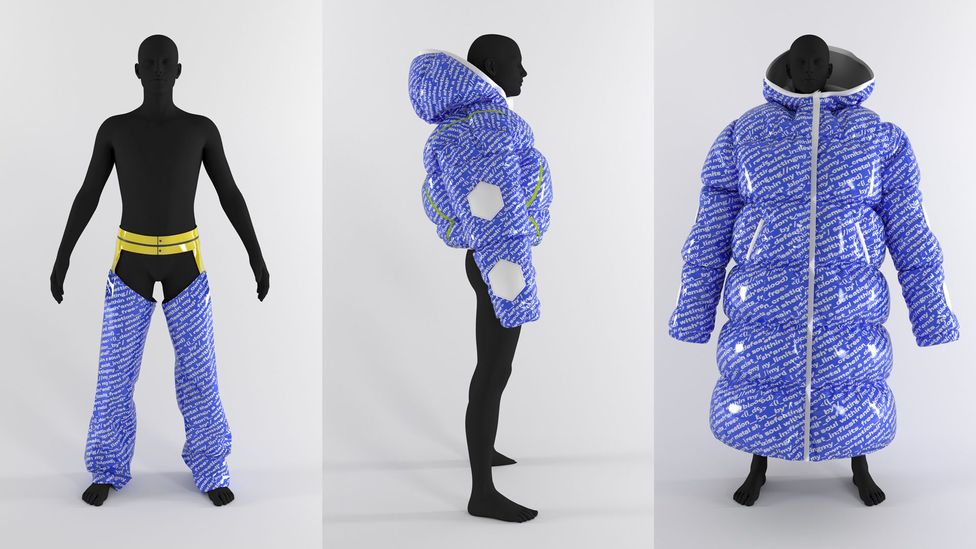
Fashion e-fitted to users’ photos has already been created by Carlings, and is set to be more widespread in years to come (Credit: Carlings)
We are, says Stott, moving ever closer to consumer-designed clothing. “Fashion – the industry it once was – no longer holds the cultural imagination or kudos it once did,” she says. “The hegemony of fashion influencers has shifted in recent years, from designers, creative directors and magazine editors to the people. The consumer wants creative input and hyper-personalised products, and technology is empowering them to do so.”
Clothes will function as a new interface – Mano ten Napel
At the same time, the technology that goes into clothes themselves is galloping ahead. Smart fabric companies are developing materials that can gather data such as, in the case of the Nike Adapt BB basketball shoe, whether a wearer needs to alter their strike in order to avoid injury. “In the future, with the roll out of 5G, clothes will function as a new interface, impacting on the way we communicate with the connected world and with each other,” says Mano ten Napel, founder of digital magazine FashNerd.
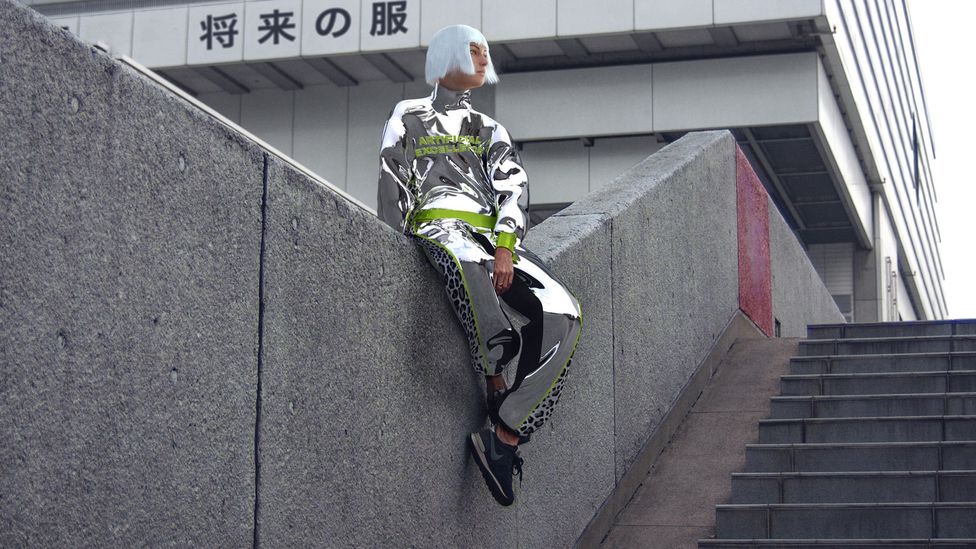
In the future clothing will become increasingly hi-tech (Credit: Carlings)
Whether or not these technologies will available to all, as in the case of fast fashion , is another matter. “I look at social behaviours,” reflects fashion forecaster Geraldine Wharry. “And I think supply scarcity – in terms of water and fabric shortages and costs going up, for example – is going to be a big one. When those things happen, people shift their budgets for what they really need to survive.” And fast fashion? “It’s an outdated model,” says Wharry. “I just cannot see how it can continue. Brands without some kind of sustainability strategy are in trouble.”
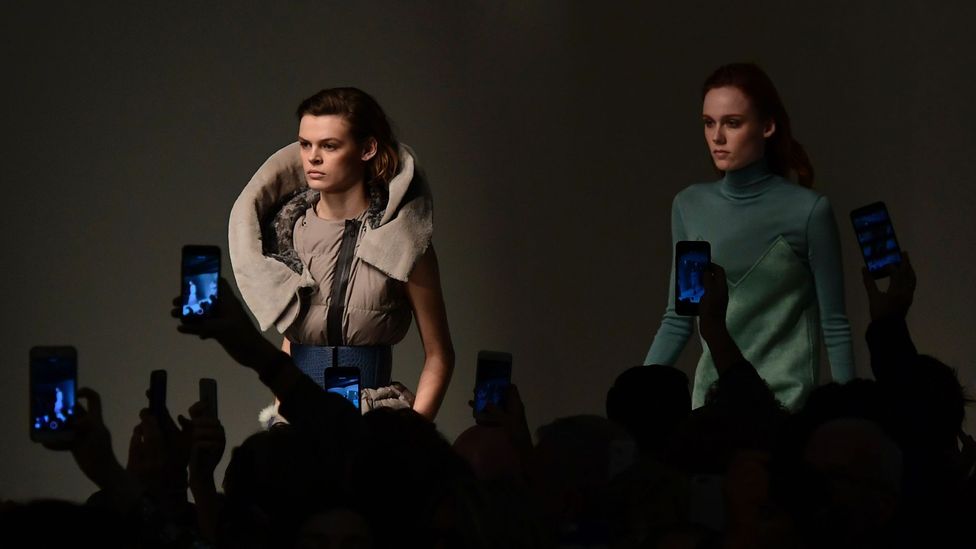
Smartphones already play a major role in the fashion industry (Credit: Getty)
So where will the ordinary person turn for their fashion fix? As future tech evolves, parallel movements are showing a return to the hand made and the tactile. “There’s a lot of interest in craft,” says Wharry. “It’s a different way of connecting with the clothes.” Secondhand markets are exploding; according to fashion resale site ThredUP, sites like itself are growing 24 times faster than the retail industry as a whole. Meanwhile, the rental economy is gaining traction. “In fashion, rental can provide newness without the environmental cost,” says Sara Arnold of Higher Studio.
Fashion will retain its identity as a form of escapism and expression
“Humans still need to be clothed so we will see a shift in the way in which we access clothing in the future,” says Stott. “Ownership is no longer the end goal. We outsource our music and film choices to digital subscription services, and we will see a similar movement with clothing powered by AI. People will subscribe to central fashion services, and borrow clothes on a short-term basis according to their needs and lifestyle changes, reducing the masses of clothing sitting unused in a closet.”

The character Luv is attired in white in the dystopian film Blade Runner 2049 (Credit: Alamy)
However we get our clothes, fashion will retain its identity as a form of escapism and expression, particularly as planetary conditions get more difficult. “If you look at the Great Depression, there was a lot of glitz and glamour,” says Wharry. “And if you look at the trends right now, there’s a lot of colour. Fashion is always a mirror of what is going on in society. There could be so much difference between the haves and the have-nots in the future that it could create very extravagant fashion.”
If you would like to comment on this story or anything else you have seen on BBC Culture, head over to our Facebook page or message us on Twitter.
And if you liked this story, sign up for the weekly bbc.com features newsletter, called “If You Only Read 6 Things This Week”. A handpicked selection of stories from BBC Future, Culture, Capital and Travel, delivered to your inbox every Friday.
Discover more from ReviewFitHealth.com
Subscribe to get the latest posts sent to your email.